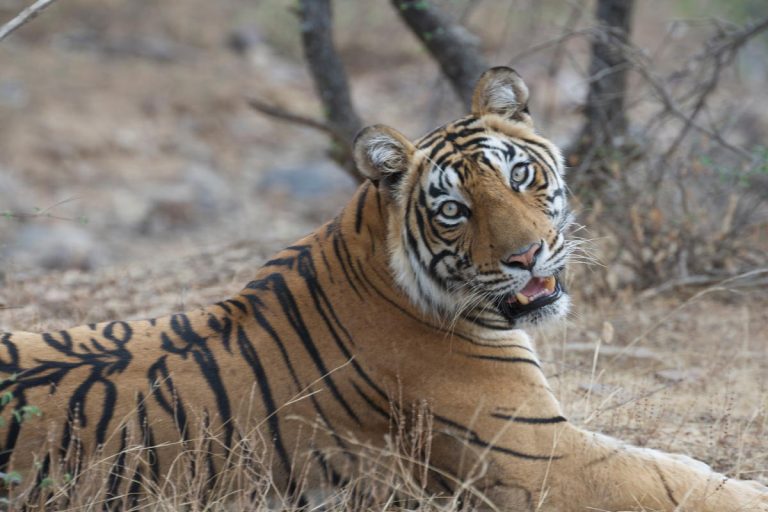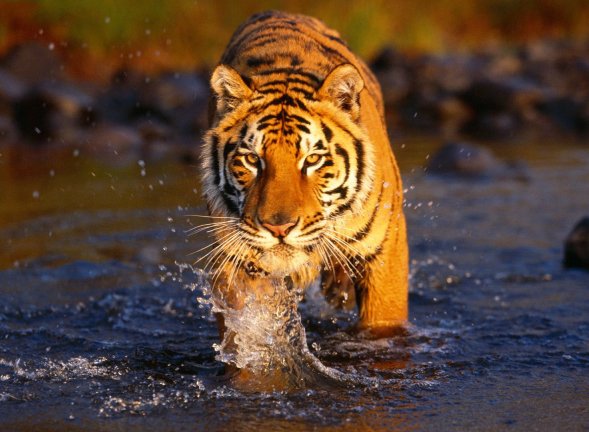Only about 4,500 wild tigers survive worldwide, largely due to persistent poaching for their body parts to feed demand in China and South-East Asia.
Meanwhile, more than 8,900 tigers are kept in captivity in facilities in China, South-East Asia and South Africa. The vast majority of these facilities provide no benefit whatsoever to wild tigers: no tiger bred in them has ever been released to the wild.
The absence of coordinated breeding to maintain genetic diversity and the conditions in which the tigers are reared, including extensive human interaction and keeping many tigers together in unnatural ‘herds’ at some facilities, render them unsuitable for release.
Far from protecting the species, many such facilities have been implicated in illegal trade in tigers and their parts and derivatives, feeding an insatiable demand that drives poaching of wild tigers and also other big cat species such as leopards, lions and jaguars, the parts and derivatives of which may be deceitfully marketed to consumers as tiger.
Consumer surveys in China have consistently indicated a preference for wild tiger bone over that from captive sources. Trade from captive facilities cannot satiate demand and instead serves to stimulate it and complicate law enforcement efforts.
What makes a captive tiger facility a “facility of concern”
The phrases “tiger farm” or captive tiger “facility of concern” are often used as a catch-all terms for: a facility that keeps or breeds tigers in captivity with an intent (or reasonable probability) of supplying or directly engaging in the commercial trade (domestic and/or international) in tiger products, be they body parts or derivatives, and/or the breeding of cubs to supply such facilities. The application of this definition is not limited by the stated purpose of such facilities.
Methodology of collecting data
Facilities implicated in trade and/or stockpiling tiger parts are indicated with a red marker on the map. Not all facilities are recorded in this map. Not all facilities on the map have been implicated in trade; these are included to demonstrate the scale of the captive tiger problem.
EIA would like to thank Education for Nature Vietnam and Wildlife Friends Foundation Thailand (WFFT) for information provided on facilities in Vietnam and Thailand. Some of this information has been gathered under the auspices of our partnership funded by the UK Government through the Illegal Wildlife Trade Challenge Fund. Other sources for Asia include Animals Asia, For Tigers and World Animal Protection. We would also like to thank EMS Foundation and Ban Animal Trading and FourPaws for information provided on tiger facilities in South Africa.
Key takeaways
- Only about 4,500 wild tigers survive worldwide.
- More than 8,900 tigers are kept in captivity in facilities in China, South-East Asia and South Africa.
- The black markers on the map represent incidents in which law enforcement agencies have seized live tigers or tiger parts and products from illegal trade suspected of deriving from captive sources.
- The captive tiger breeding industry has ballooned thanks to government support and lax enforcement.
- South African legislation allows for the commercial breeding of tigers and domestic and international trade in captive-bred tigers.
- In Laos, government support for tiger farming led to a flourishing trade in tigers to Vietnam and China, and sale of tiger parts and products to Chinese consumers in Laos. Despite a commitment by the Laos Government in 2016 to phase out tiger farms, new tiger facilities have since been established.
- In Thailand, facilities masquerading as zoos are taking advantage of weak enforcement to engage in illegal trade. While in Vietnam the greatest challenge comes from outright illegal facilities in Nghe An Province.
- India, home to over half of the world’s remaining wild tigers, does not allow commercial breeding of tigers or any commercial trade in their parts and products.
- Well-established trafficking routes that are decades old are still being used to move wild tiger parts across borders between India-Nepal-China, India-Myanmar-China-Laos and Laos-Vietnam-China.
- In China, tiger facilities have expanded with government support, and range from huge farms to circuses and zoos, some of which have been licensed to legally sell tiger parts.
Contact us
If you wish to provide feedback, request information or submit data relating to this map or the Global Environmental Crime Tracker, please contact us.





